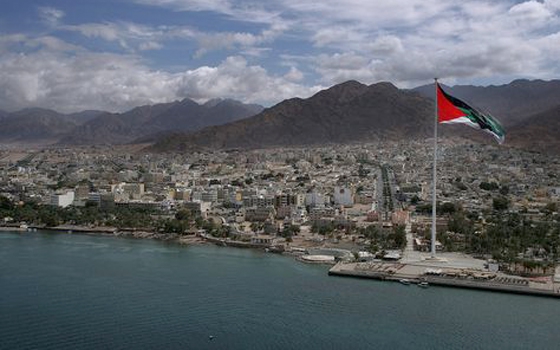In the face of regional instability, high levels of debt and the cost of hosting hundreds of thousands of refugees, Jordan’s economy exhibited resilience this year, with prospects for even stronger growth in 2017 on the back of international support and wide-reaching reforms.
A favorable assessment of Jordan’s institutional framework and government policies allowed ratings agency Moody’s to affirm the kingdom’s “B1” government issuer and “B1” senior unsecured debt ratings in mid-November.
“Geopolitical risks, including spill-over effects from conflicts in Syria and Iraq, are structural features constraining Jordan’s credit rating and are not expected to change in the next few years,” the report said. “The stable outlook reflects Moody's views that the government will continue [to] pursue fiscal consolidation that should stabilize the high debt metrics over the medium term.”
External support
This positive assessment was bolstered in late August, when the IMF signed off on a $723m extended fund facility (EFF) to support Jordan’s economic and financial reform program.
As well as aiming to encourage fiscal consolidation, the agreement targets the creation of job and investment opportunities through the development of a more dynamic private sector.
According to IMF forecasts when the deal was made, Jordan’s economy was expected to grow by 2.8% this year, up from 2.4% in 2015, with inflation coming in at a modest 1.2% and rising to 2.5% next year as demand picks up.
In November, however, the IMF revised its year-end GDP growth forecast to 2.4%, as performance in some sectors – most notably mining – slowed.
In the same month the IMF released the first of six scheduled reviews of the EFF, which stated that public debt would exceed the targeted 94.4% of GDP by the end of the year, with the organization posting a new estimation of 95.1%.
Weaker economic prospects among member states of the GCC – a major trade partner and provider of aid – were also reported to have weighed on Jordan’s economy. However, the IMF’s outlook for the remainder of this year and 2017 is largely positive, highlighting the fact that the government has already moved forward successfully in implementing the terms of the agreement.
Concerns remain
While positive messages have come from the IMF and Moody’s regarding the kingdom’s near-term prospects, some analysts have been less upbeat.
In October S&P Global Ratings affirmed its assessment of Jordan’s long- and short-term foreign and local currency sovereign credit ratings at “BB-” and “B”, respectively, while also maintaining its negative outlook.
According to a statement released by the agency that month, Jordan continues to face significant pressures due to ongoing regional conflicts, with the continued disruption of trade with Iraq and falling receipts from tourism contributing to its current account deficit growing to 12% of GDP by the middle of the year, up from 9% last year.
“Furthermore, with slower regional growth because of lower oil prices, the outlook for foreign direct investment, remittances and other transfers remains uncertain,” the statement read.
Despite these headwinds, S&P also anticipates medium-term economic improvements as fiscal and regulatory reforms take hold.
Empowering votes
Jordan went to the polls in September in the first general election to be contested in a form of proportional representation since 1989.
This change was rung through by a new electoral bill passed in spring 2016, which also divided the kingdom into 23 electoral districts. In addition, the new law allocates 115 seats for the nation’s constituencies and a minimum quota of 15 female members of parliament.
A total of 20 female candidates claimed seats in the reformed assembly, up from the 18 in the old house, which had 150 deputies. There were also a record number of female candidates running in the election, with 252 represented on the ballot paper.
The Islamic Action Front, a political party that had previously boycotted the elections, won 15 seats; however, the majority of the new MPs are individuals with either tribal or business affiliations. Despite the new electoral system, turnout was low, with 37% of Jordan’s 4m registered voters casting a ballot, down on the 50% recorded in the 2013 election.
Positive prospects
Jordan’s economy is set to grow at a faster rate next year, with the IMF predicting that GDP will grow by 3.3%, rising to 3.8% in 2018 and 4% in subsequent years.
Improvements in export and state revenue should also see public debt levels narrow from 94.4% this year to 77% by 2021.
With the 2017 budget set to contain reforms to the exemptions framework for general sales tax and Custom duties – in addition to a further broadening of the income tax base – the fiscal gap should narrow, helping the kingdom continue with its economic recovery.
Oxford Business Group
3 January























































